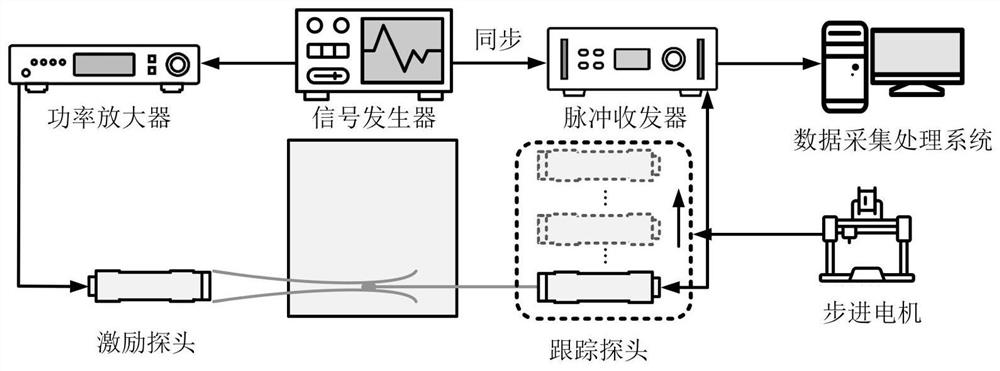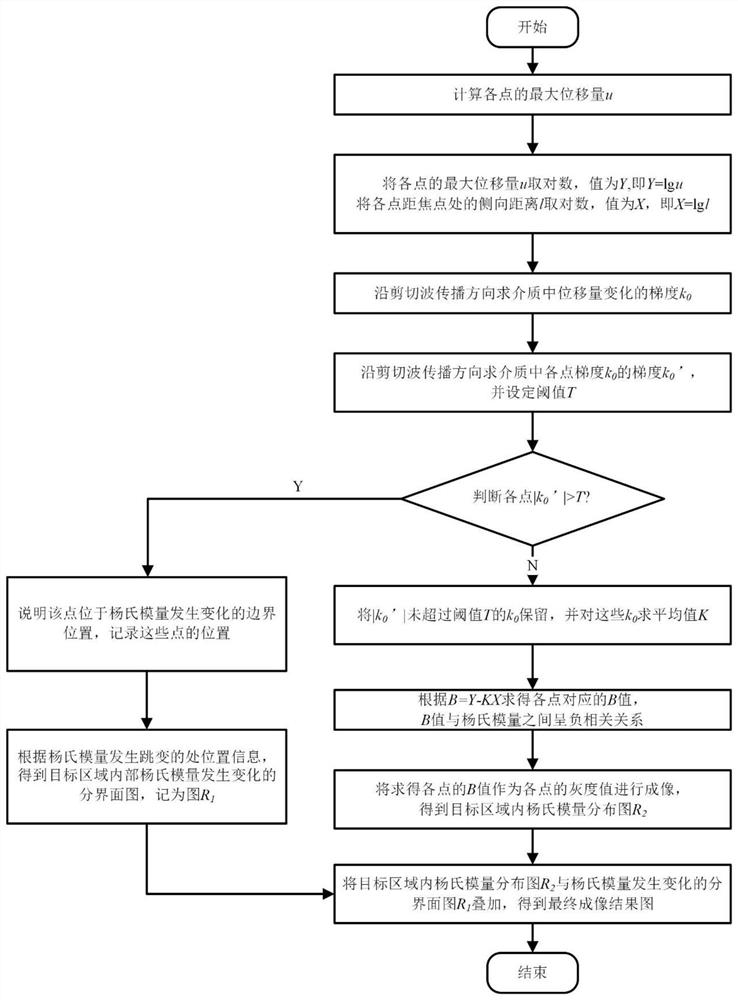Acoustic radiation force pulse elastography method based on displacement attenuation characteristics
A technology of acoustic radiation force and attenuation characteristics, applied in the direction of re-radiation of sound waves, using re-radiation, instruments, etc., can solve the problems of low efficiency and low spatial resolution of reconstructed images, so as to improve spatial resolution, improve imaging efficiency, The effect of simplifying the imaging system and measurement process
- Summary
- Abstract
- Description
- Claims
- Application Information
AI Technical Summary
Problems solved by technology
Method used
Image
Examples
Embodiment Construction
[0029] The acoustic radiation force pulse elastography method based on the displacement attenuation characteristics of the present invention will be described with reference to the drawings and embodiments.
[0030] Based on the law of shear wave propagation in the medium, the invention utilizes the attenuation characteristics of the displacement in the lateral direction, and by compensating the attenuation of the displacement caused by the shear wave during the propagation of the medium, reconstructs the elastic characteristic distribution of the medium and reduces the excitation times of the excitation probe , simplify the imaging system and process, improve imaging efficiency and spatial resolution, and propose an acoustic radiation force pulse elastography method based on displacement attenuation characteristics.
[0031] The measurement system of the acoustic radiation force pulse elastography method based on the displacement attenuation characteristics of the present inve...
PUM
 Login to View More
Login to View More Abstract
Description
Claims
Application Information
 Login to View More
Login to View More - R&D
- Intellectual Property
- Life Sciences
- Materials
- Tech Scout
- Unparalleled Data Quality
- Higher Quality Content
- 60% Fewer Hallucinations
Browse by: Latest US Patents, China's latest patents, Technical Efficacy Thesaurus, Application Domain, Technology Topic, Popular Technical Reports.
© 2025 PatSnap. All rights reserved.Legal|Privacy policy|Modern Slavery Act Transparency Statement|Sitemap|About US| Contact US: help@patsnap.com



